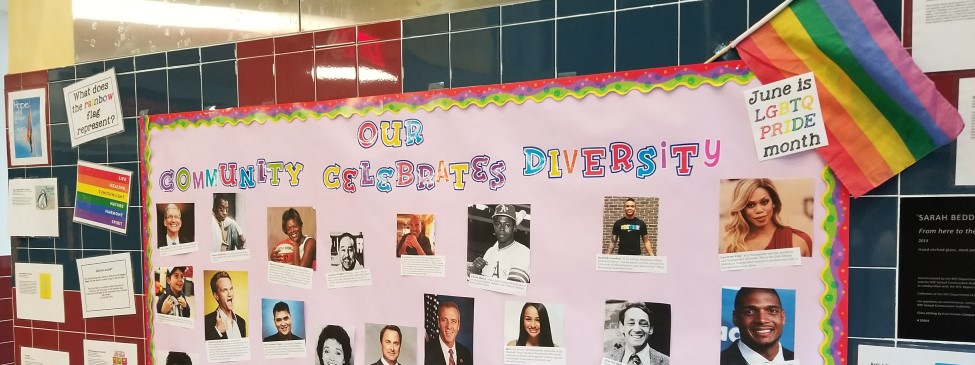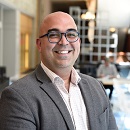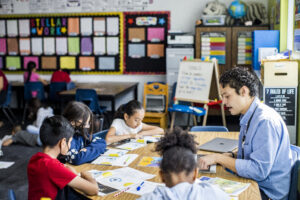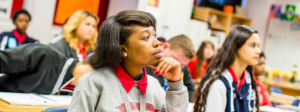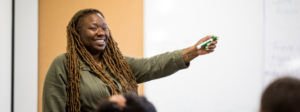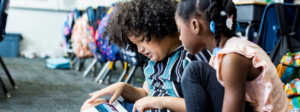I came out to my school community on a bulletin board.
For a long time, I had not considered coming out in school—or at least, I had not thought it through. In all my years teaching, I had of course been asked if I was married, or had a girlfriend, to which I always replied “no.” Since there were usually no follow-up questions, I felt I had dodged some difficult conversations with 9-year-olds that I might not have been ready for. Although I chose to stay silent about that aspect of my identity, I thought that I was still imparting to students a sense of acceptance of differences and inclusion through the books I selected, the way I spoke, and my pedagogical approaches. Whenever the word “gay” came up—particularly when it was being used negatively—I stood up and questioned students about it and would use the opportunity to speak about the meaning, how it was just another way of being, and how we should respect each other. I thought this was enough. I was wrong.
Around the time I became a principal, I met a group of educators who were actively supporting each other with the idea of self-disclosure and authenticity in schools as members of the LGBTQ+ community. The Proud Teacher Initiative held monthly meetings and events to discuss these topics and to share out stories of being queer in schools. Many of these stories really hit home for me. In many ways, they brought me back to my own experience as a queer youth, navigating my identity and feeling isolated. I did not know any educators that were out when I was in school and wondered whether having my identity represented and visible when I was growing up could have made my experience more bearable. It was through the power of stories that I began to open up to the possibility.
I began toying with the idea of coming out to my school community, having realized that creating an inclusive environment for all meant we couldn’t check a part of ourselves at the door—that we had to come to school without masks if we wanted to send the message that all are welcomed. Our school motto is “Accountability, Courage, and Excellence.” As the school leader, the one who sets the example, I knew I had to be honest and courageous. The question for me then was not whether I should come out, but how I should do it.
Straight people come out all the time. Every time they mention their “wife” or “husband” they are coming out to their students. When they show them their wedding pictures or family photos, they are coming out. Every time they read a story representing straight families and make personal connections to the character’s lives with their own, they are revealing their orientation. For many queer educators, these simple gestures carry heavy weight on their minds. How will students react? What will the parents say or do? What will my administration say? What does this mean for me as a member of my community? This unequal reality exists for those of us whose identity has historically not been affirmed in schools.
As we continue to have the much-needed conversation about equity in our nation’s school systems and speak openly about race, disproportionality, segregation, and opportunity gaps, we cannot leave the LGBTQ+ community out of the conversation. For many of us, these identities intersect, and issues of inequity and discrimination have long been a part of our story. Legal protections for LGBTQ+ people in the workplace remain unequal across the nation, and there are still those trying to roll back the advances that have been made. When we widen our view of what is possible, we make room for others, for everyone. Borrowing from Dr. Michelle Fine’s keynote address at Columbia University this past May, we must “speak, act, disrupt, challenge, critique and help…plant a seed of radical possibility.” This is our assignment.
That’s why I came out to my school community on a bulletin board during Pride month two years ago.
I wanted to create a display as people entered our building that recognized, affirmed, and celebrated the “diversity of being.” Teachers and students worked on it and included images of LGBTQ+ role models, a selection of books that families could read with their children, the history of Stonewall, and the pride flag. As they were working on it and I was taking pictures, they told me they had left the center of the display blank, so that I may put my picture there. For a moment, a split second, my heart sank. But then I stepped through the uncertainty and said yes! Nothing I feared actually happened. Instead, I heard from students who thought it was brave, and from families about how much it meant to them. I felt that I’d opened a door for everyone to come through.
Fast forward to today. As we get ready to celebrate the 50th anniversary of the Stonewall uprising and World Pride here in NYC, I continue to celebrate the many “ways of being” in my school community and remember those giants whose shoulders we stand on: Marsha P. Johnson, Harvey Milk, Bayard Rustin and so many others. Whether it is our school pride celebration, including LGBTQ+ topics in the curriculum, or simply being myself at all times without fear, I will continue to make sure my school is a space for everyone to feel welcomed, affirmed, and included. Isn’t that what we want for all our students?
